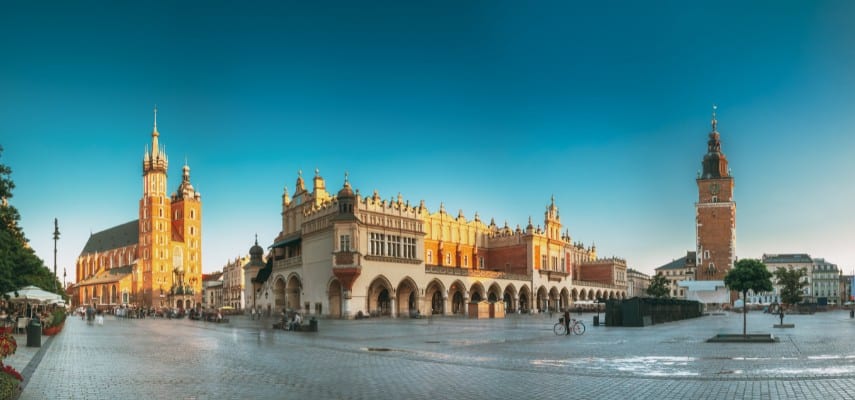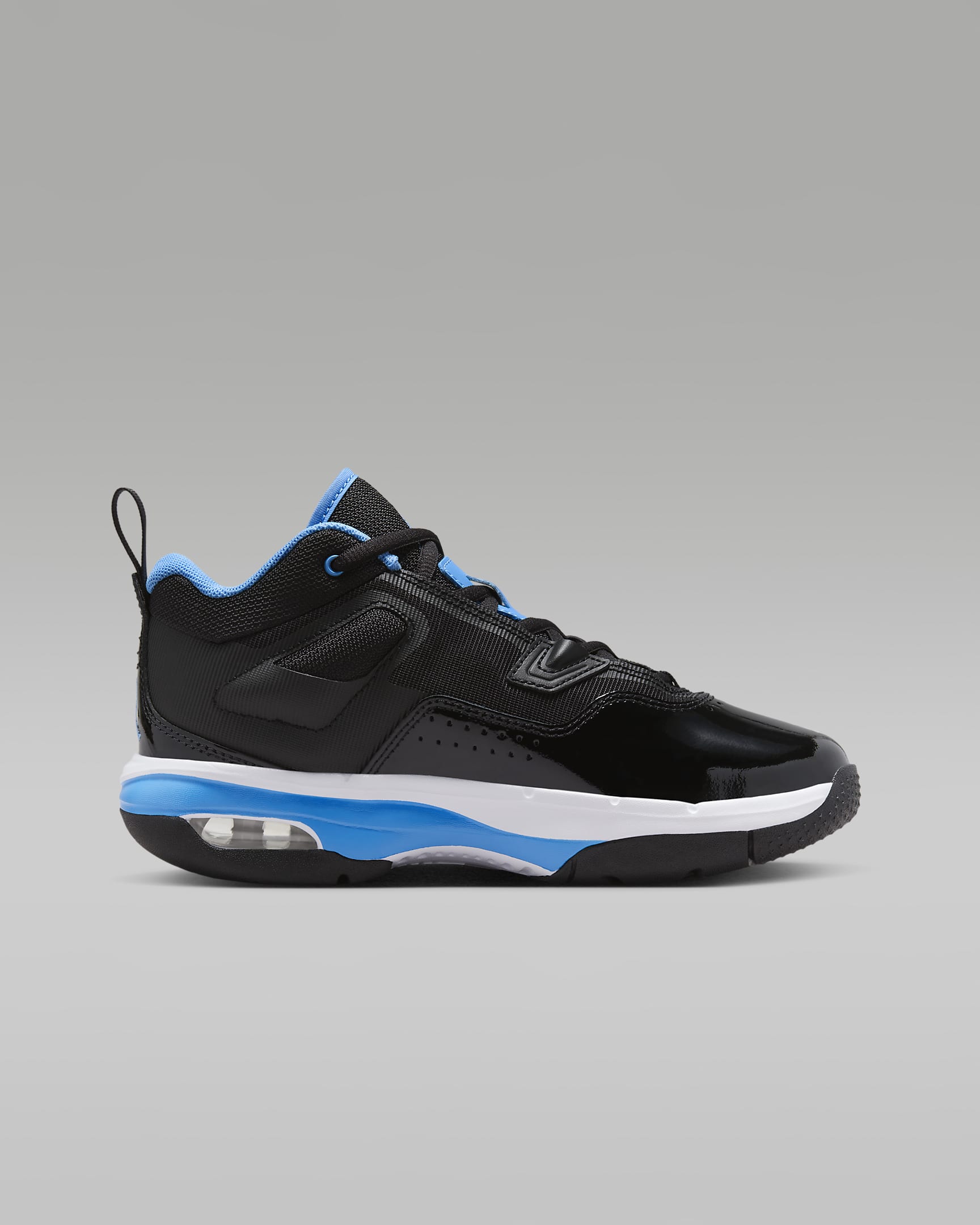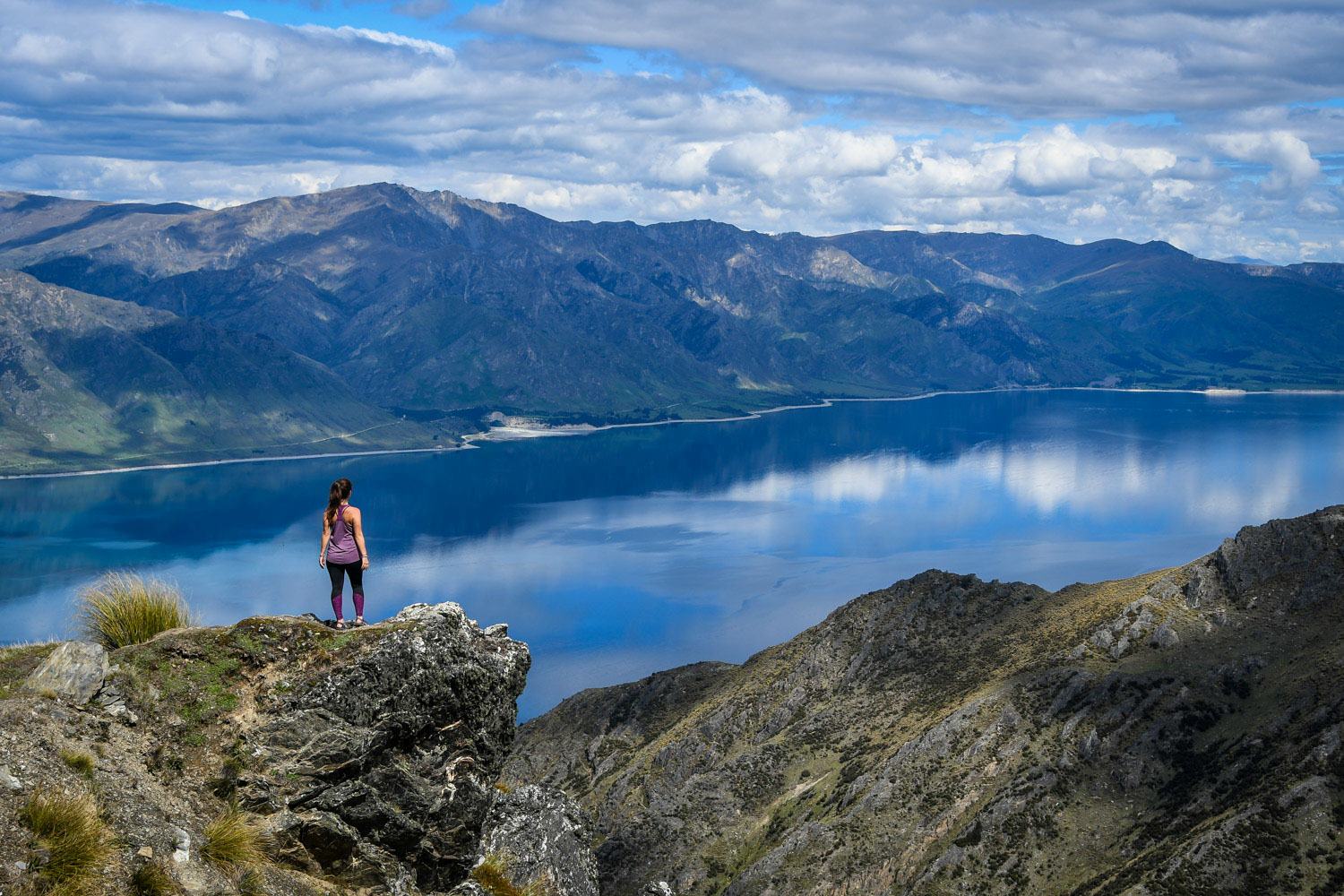
New Zealand, or Aotearoa (Land of the Long White Cloud) in Māori, is a land of breathtaking beauty and captivating contrasts. From towering snow-capped mountains and verdant rainforests to pristine beaches and geothermal wonderlands, New Zealand offers an unparalleled adventure for every type of traveller. This comprehensive guide will equip you with everything you need to plan an unforgettable journey to this Pacific paradise.
Top Attractions: A Tapestry of Natural Wonders and Cultural Experiences
New Zealand boasts a diverse range of attractions that cater to a wide array of interests. Here’s a glimpse of some must-see destinations:
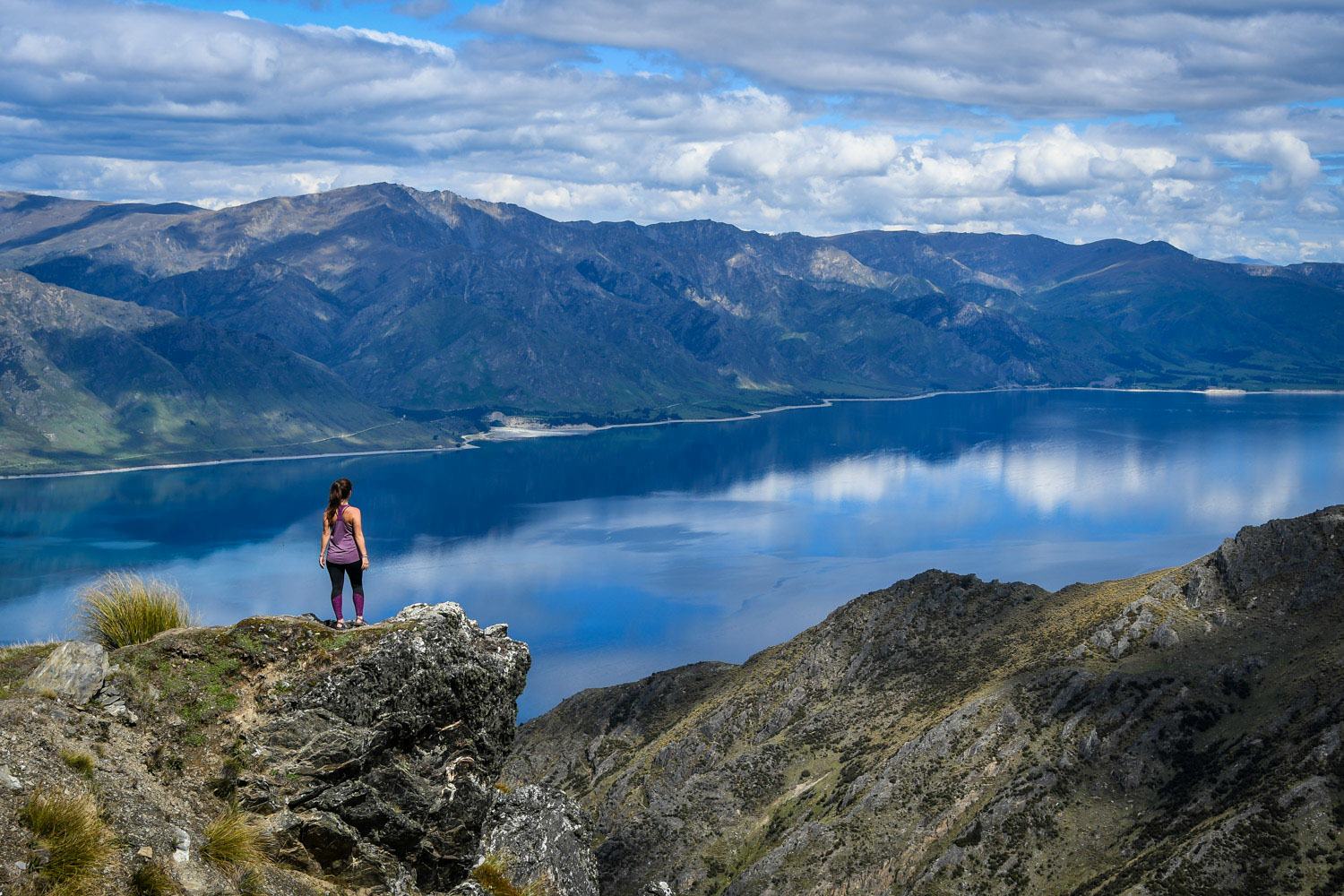
Related Articles about Journey to Aotearoa: Your Ultimate Guide to Exploring New Zealand:
- Mexico: A Tapestry of Ancient Wonders, Vibrant Culture, and Sun-Kissed Shores
- Norway’s Enchanting Embrace: A Journey Through Its Best Hotels and Unforgettable Experiences
- Croatia: A Sun-Kissed Symphony of History, Nature, and Coastal Charm
- Discover the Jewel of the Levant: Your Ultimate Guide to Exploring Lebanon
- Brazil: A Symphony of Sun, Samba, and Unforgettable Adventures
-
North Island:
- Auckland: New Zealand’s largest city is a vibrant hub of culture, dining, and maritime activities. Climb the Auckland Harbour Bridge, sail on the Waitematā Harbour, explore the Auckland War Memorial Museum, and wander through the lush Domain Park.
- Rotorua: Immerse yourself in Māori culture and witness the power of geothermal activity in Rotorua. Visit Te Puia to see geysers erupt, learn about traditional Māori arts and crafts, and experience a Hāngi feast cooked in the earth.
- Waitomo Caves: Venture into the depths of the Waitomo Caves and marvel at the mesmerizing glowworm grotto. Take a boat ride through the caves and witness thousands of tiny bioluminescent creatures illuminating the darkness.
- Bay of Islands: Discover a paradise of pristine beaches, secluded coves, and abundant marine life in the Bay of Islands. Go dolphin watching, kayaking, or simply relax on the golden sands.
- Tongariro National Park: Hike the Tongariro Alpine Crossing, a challenging but rewarding day trek that traverses volcanic landscapes, emerald lakes, and surreal terrain. This iconic hike is considered one of the best in the world.
- Wellington: The capital city of New Zealand is a cultural and political center, known for its vibrant arts scene, quirky cafes, and stunning harbor views. Visit the Te Papa Tongarewa Museum of New Zealand, ride the Wellington Cable Car, and explore the trendy Cuba Street.
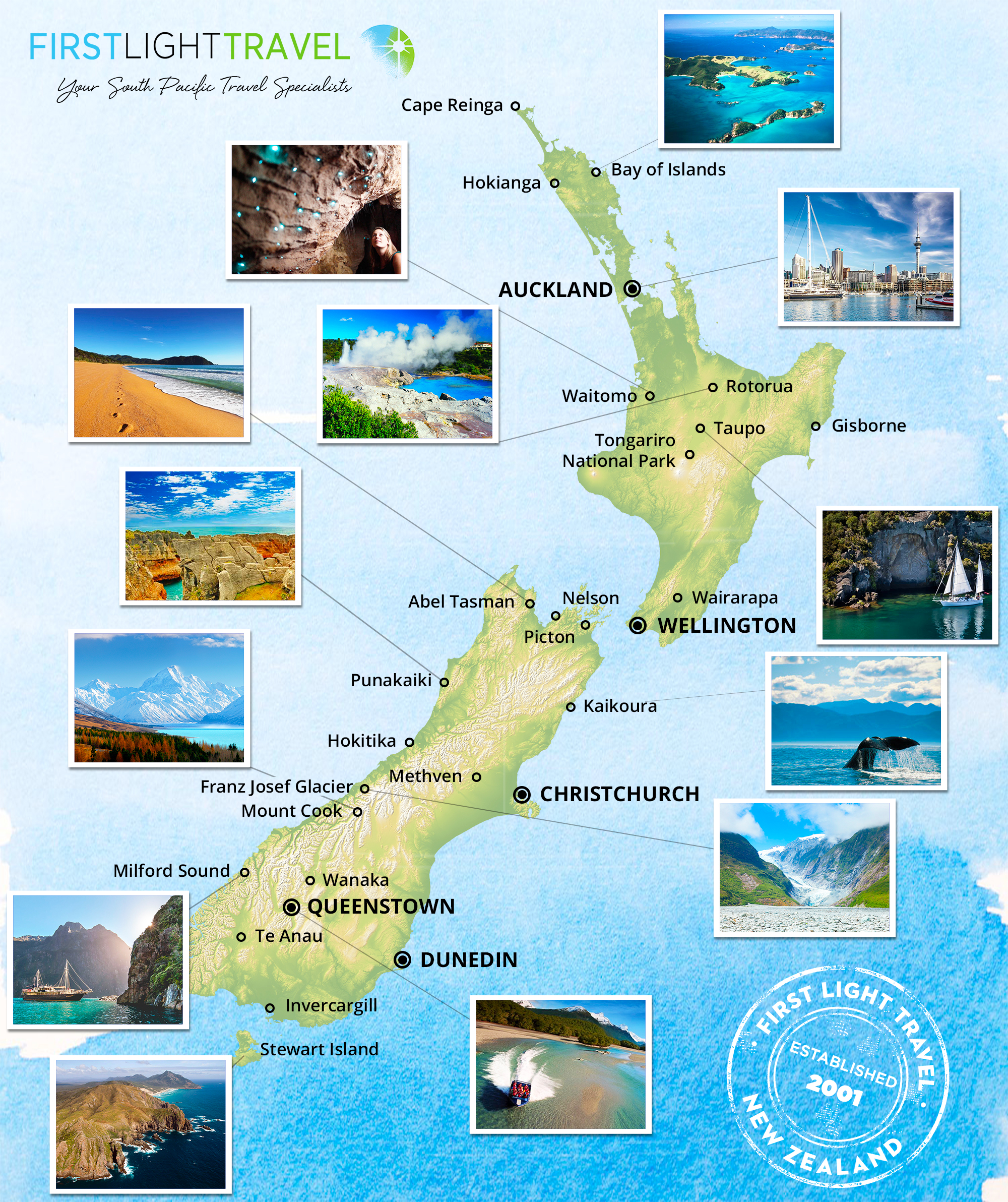
-
South Island:
- Queenstown: The adventure capital of New Zealand offers a thrilling array of activities, from bungy jumping and white-water rafting to skiing and jet boating. Explore the picturesque town center, ride the Skyline Gondola for panoramic views, and take a scenic cruise on Lake Wakatipu.
- Milford Sound: Journey into the heart of Fiordland National Park and witness the majestic beauty of Milford Sound. Take a cruise through the fiord, surrounded by towering cliffs, cascading waterfalls, and lush rainforest.
- Franz Josef & Fox Glaciers: Hike to the base of these impressive glaciers and marvel at their icy blue formations. Take a guided glacier walk or a scenic helicopter flight for a closer look.
- Lake Tekapo: Admire the turquoise waters of Lake Tekapo and the iconic Church of the Good Shepherd, set against the backdrop of the Southern Alps. This is a popular spot for stargazing, thanks to its clear skies and low light pollution.
- Abel Tasman National Park: Explore the golden beaches, turquoise waters, and lush coastal forests of Abel Tasman National Park. Go kayaking, hiking, or take a scenic boat trip to discover hidden coves and pristine bays.
- Christchurch: Rebuilt after the devastating earthquakes, Christchurch is a city of resilience and innovation. Explore the Botanic Gardens, visit the Canterbury Museum, and take a punting tour on the Avon River.
A Glimpse into History: Māori Culture and Colonial Legacy
New Zealand’s history is a rich tapestry woven from the threads of Māori culture and colonial settlement. The Māori people, who arrived in New Zealand from Polynesia around 1300 AD, developed a unique culture and way of life. Their traditions, language, and art forms continue to thrive today.
The arrival of Europeans in the late 18th century marked a significant turning point in New Zealand’s history. The Treaty of Waitangi, signed in 1840, was intended to establish a relationship between the Māori and the British Crown, but it has been the subject of ongoing debate and interpretation. Understanding this historical context is crucial for appreciating New Zealand’s cultural landscape.
Travel Tips for a Smooth Journey
- Visa Requirements: Check visa requirements based on your nationality before travelling. Many countries are eligible for visa-free entry for tourism purposes.
- Currency: The currency is the New Zealand Dollar (NZD). Credit cards are widely accepted, but it’s always a good idea to carry some cash for smaller establishments and rural areas.
- Driving: Driving is a popular way to explore New Zealand. Driving is on the left-hand side of the road. An International Driving Permit is recommended. Be aware of the winding roads and variable weather conditions, especially in mountainous areas.
- Safety: New Zealand is generally a safe country, but it’s still important to take precautions against petty theft and scams. Be aware of your surroundings and keep your valuables secure.
- Sun Protection: The sun in New Zealand can be very strong, even on cloudy days. Wear sunscreen, a hat, and sunglasses to protect yourself from the sun’s harmful rays.
- Insect Repellent: Mosquitoes and sandflies can be annoying, especially in coastal areas. Pack insect repellent to avoid being bitten.
- Respect Māori Culture: Be respectful of Māori culture and traditions. Ask permission before taking photos of people or sacred sites. Learn a few basic Māori phrases, such as "Kia ora" (hello) and "Ngā mihi" (thank you).
- Leave No Trace: Practice responsible tourism by leaving no trace of your visit. Dispose of your rubbish properly, stay on marked trails, and respect the natural environment.
Accommodation Options: From Backpackers to Luxury Lodges
New Zealand offers a wide range of accommodation options to suit every budget and preference.
- Backpackers Hostels: A budget-friendly option for solo travellers and those looking to meet other travellers. Hostels offer dorm rooms and private rooms, as well as communal kitchens and social areas.
- Motels: A popular choice for families and those seeking self-catering facilities. Motels typically offer private rooms with kitchenettes and parking.
- Hotels: A wide range of hotels are available, from budget-friendly options to luxury resorts. Hotels offer various amenities, such as restaurants, bars, and swimming pools.
- Bed and Breakfasts (B&Bs): A charming option for those seeking a more personal experience. B&Bs offer comfortable rooms and a home-cooked breakfast, as well as insights into the local area.
- Holiday Homes & Apartments: Ideal for families or groups travelling together. Holiday homes and apartments offer self-catering facilities and more space than a hotel room.
- Luxury Lodges: For a truly indulgent experience, consider staying at a luxury lodge. These exclusive properties offer stunning locations, gourmet cuisine, and exceptional service.
- Camping: Camping is a popular way to experience New Zealand’s natural beauty. There are numerous campgrounds throughout the country, ranging from basic campsites to fully equipped holiday parks.
Transportation: Getting Around the Land of the Long White Cloud
- Air Travel: New Zealand has a well-developed domestic air network, making it easy to travel between major cities. Air New Zealand and Jetstar are the main domestic airlines.
- Rental Cars: Renting a car is a popular way to explore New Zealand, giving you the freedom to travel at your own pace. Several rental car companies operate at airports and in major cities.
- Campervans: Campervans offer a flexible and self-contained way to travel around New Zealand. Several campervan rental companies offer a range of vehicles, from basic vans to fully equipped motorhomes.
- Buses: InterCity and other bus companies offer services between major towns and cities. Buses are a budget-friendly option, but they can be slower than flying or driving.
- Trains: KiwiRail operates scenic train journeys through some of New Zealand’s most stunning landscapes. The TranzAlpine train between Christchurch and Greymouth is particularly popular.
- Ferries: Ferries connect the North and South Islands. Interislander and Bluebridge are the main ferry operators.
Best Time to Visit: Seasons and Considerations
The best time to visit New Zealand depends on your interests and what you want to experience.
- Summer (December – February): The warmest months, with long daylight hours and ideal conditions for outdoor activities. This is peak season, so expect higher prices and more crowds.
- Autumn (March – May): A beautiful time to visit, with stunning fall foliage and pleasant temperatures. The crowds are thinner than in summer.
- Winter (June – August): The ski season in the Southern Alps. A great time for snow sports, but be prepared for colder temperatures and shorter daylight hours.
- Spring (September – November): A vibrant time to visit, with blooming flowers and mild temperatures. The crowds are still relatively thin.
Conclusion: Embrace the Adventure
New Zealand is a land of adventure, beauty, and cultural richness. Whether you’re seeking thrilling outdoor activities, breathtaking scenery, or immersive cultural experiences, New Zealand has something to offer everyone. By planning ahead, packing appropriately, and respecting the local culture, you can ensure an unforgettable journey to Aotearoa. So, pack your bags, book your flights, and get ready to explore the Land of the Long White Cloud!
